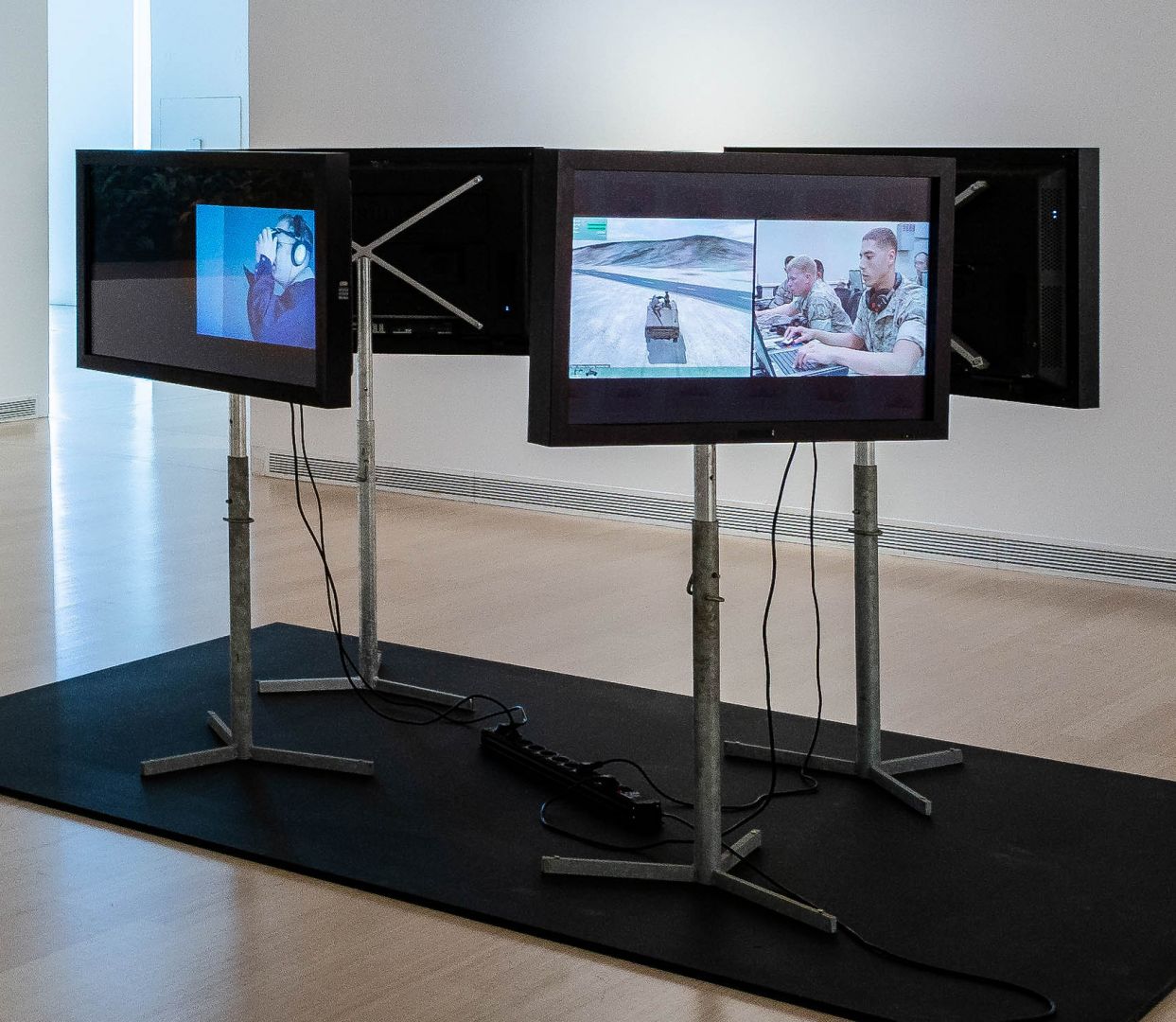Harun FAROCKI
Serious Games
Harun FAROCKI
Serious Games I: Watson is Down, 2010
video, colour, sound; 8’
Courtesy of Harun Farocki GbR
Serious Games II: Three Dead, 2010
video, colour, sound; 8’
Courtesy of Harun Farocki GbR
Serious Games IV: A Sun with no Shadow, 2010
video, colour, sound; 8’
Courtesy of Harun Farocki GbR
Serious Games III: Immersion, 2009
video, colour, sound; 20’
Collection of the Ludwig Museum – Museum of Contemporary Art, Budapest
Purchased from funds provided by Peter und Irene Ludwig Stiftung, Aachen, 2010
Post-traumatic stress disorder (PTSD) can be caused by traumatic events that are outside the scope of everyday human experience. Examples include military combat. In PTSD, the natural stress response continues to occur after the traumatic event, and the disorder becomes prolonged. Exposure therapy in virtual reality (VR) is widely used by the US military. The technique involves presenting the patient with a controlled visualisation of the environment and situations that trigger the symptoms, until the patient’s reaction to them is attenuated. Made up of four video installations, Harun Farocki’s revealing work not only presents the video game technology used on military bases to train soldiers and treat veterans, but also provides a critical documentation of their application, the blending of virtual and real warfare. The footages include a virtual simulation of an ambush attack, an exercise performed with extras and a demonstration of Virtual Iraq.
In all cases, the simulations are based on real cartographic data, and the computer-generated environment accurately represents the Middle Eastern landscape and local geography. The “game” used in training is designed to provide a virtual picture of the war before the soldiers even travel to the theatre of operations. In the footages, the soldiers experience their own deaths, but the experience is reduced to a minor annoyance, as the operation can be restarted at any time, as in computer games. Virtual Iraq, by contrast, is an example of the therapeutic use of virtual tools. In the scope of the workshop, the patient navigates in a desert or urban environment, but the events are chosen by the therapist, who can make the soldier a victim of an attack or a witness to horrific events. Thanks to the split-screen format, the spectator both sees the simulation from the inside, witnessing the actual events, while also coming face to face with the process of reconstructing real events. In the final chapter of the series, Harun Farocki highlights an important difference: the software used for rehabilitation is cheaper than the state-of-theart version used for training. The most striking difference is that in the cheaper version there are no shadows.
FEIGL Fruzsina
